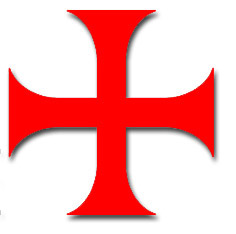THE
HOLY SCRIPTURES
PROPHESY
IS HISTORY, WRITTEN IN ADVANCE
the
position of Daniel, was an impossible one.
The
famous “statue-dream” of the Babylonian king Nebukadnezar Daniel
interpreted in the most positive way. The conqueror of Jerusalem was
an unpredictable and violent man and should be pleased. Otherwise a
violent death was plausible. Failure in the service of Nebukadnezar
meant death.
Daniel
explained the “statue-dream” as follows. The golden head
symbolised Babylon, the other parts represented the Medean-Persian
Empire (the silver chest), Greece ( bronze hips), Rome (the iron
legs0. The feet of the statue were composed of a mixture of iron and
clay. This makes the statue weak and, hit by a rock, falls.
Of
course this is a modern interpretation of Daniels profetic texts and
in apocalyptic texts the European Union is often named as the toes of
the statue. The fall of Nebukadnezar's dream-statue is about to
happen. To believers this explanation underlines the fact, that we
live in the End of Days. The time the statue falls.
I
already mentioned the pressure and stress Daniel tried to handle
during the confrontation with the Babylonian. I accept that Daniel's
psychic powers could tap the thoughts of the King.
I
think Daniel chose the flattering interpretation of the statue-dream.
The real situation was, that Babylon was about to fall. Shortly after
the death of the Babylonian ruler Babylon's empire crumbled and the
city fell into the hands of Cyrus the Great, starting the silver
phase of mankind.
But
there is an interpretation Daniel even had direct knowledge of. He
lived most of his life in Babylon and and part of the Imperial court.
He must have seen, that the glory of Babylon was fading and that
there was a lot of pressure on the borders.
Instead
of tackling this problem, he stayed in his court in Babylon, to be
entertained and confront his “staff” with ridiculous tasks. His
successor went a step further and drank wine out of Temple-cups. God
wrote his death-sentence personally on the wall. Babylon was in last,
crumbling, phase. The rock, who brought the inheritance of this great
king down, was the united forces of Cyrus the Great, who simply broke
through the defenses and rode into Babylon, the Great, who
surrendered without a fight.
The
Persians and Medians took over. The new king Cyrus gave the
Isrealites permission to return to Jerusalem and, after 70 years,
start rebuilding the city, that suffered under the might of
Nebukadnezar, king of Babylon.



